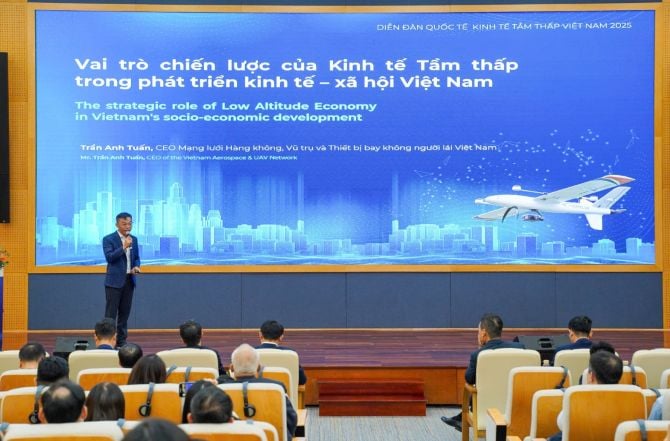
Mr. Tran Anh Tuan - Vice President of Innovation Network and expert in aviation, space, and unmanned aerial vehicles (AUVS VN) spoke at the Forum.
Strategic potential
Low-altitude economics is understood as economic activities taking place at altitudes below 1,000 m, and can be extended to below 5,000 m depending on the actual needs of each country. LAE includes not only aircraft but also hardware manufacturing industries, supporting industries, core technologies in software, AI and airspace management systems.
In Vietnam, drone technology is classified as aviation and space technology, one of 11 strategic technology groups that Vietnam aims to master.
FPT Corporation Chief Technology Officer Vu Anh Tu estimates that Vietnam's low-end economy could reach 2-3 billion USD by 2030. Further, the ambitious target is to reach 10 billion USD in revenue and create one million jobs by 2035.
If Vietnam seizes this opportunity, it will promote the three pillars of the new era: digital economy, green economy and knowledge economy. With a strategic vision, Vietnam can become the LAE manufacturing and service center of the region.
Meanwhile, Mr. Vo Xuan Hoai, representative of the National Innovation Center (NIC), emphasized that many countries have considered aerospace and UAVs as strategic technology industries. He affirmed that UAVs are a niche in which Vietnam can participate deeply in the value chain.
LAE's current footprints in Vietnam
Experts at the Vietnam Low-Economy International Forum 2025 affirmed that LAE has a clear presence in Vietnam. LAE is applied in many fields:
Precision Agriculture : This is the largest UAV application area in the country, especially in the Mekong Delta. This area has over 3,000 drones operating to serve 1.5 million hectares. UAVs are the key solution for spraying/fertilizing automation, pest monitoring and growth assessment, helping to increase productivity exponentially. A UAV sprayer can treat 67 hectares/day, far exceeding manual labor (about 1 hectare). The market for UAVs and agricultural robots is forecast to reach 363.7 million USD by 2030, increasing by 4.76%/year.
Logistics and Rescue : Drones have actively supported rescue and transport of goods to hard-to-reach places in recent natural disasters. UAVs have also been used to deliver relief goods during historic floods in Thai Nguyen, Tuyen Quang, Bac Ninh and tested automated delivery at the Lang Son logistics area, helping to shorten time, reduce costs and overcome terrain limitations.
Smart Cities and Infrastructure Monitoring : UAVs support monitoring of traffic, technical infrastructure, transmission lines and urban order in big cities such as Thu Duc City and Hanoi.
National Security : Flying devices not only have economic value but also national security value.
Mr. Vu Anh Tu emphasized: "These examples prove that the low-level economy is present. The question is no longer 'to do it or not', but how to turn the pieces into a national strategic picture."
Solutions to promote low-level economy
To turn potential into reality, LAE needs multi-dimensional cooperation between the State - Enterprises - Institutes, schools - People.
Mr. Tran Anh Tuan, CEO of the Vietnam Aviation, Space and Unmanned Aerial Vehicle Network, proposed five main directions and solutions: Building a flexible legal corridor for low-altitude airspace; Focusing on domestic R&D investment. The State needs to have preferential R&D policies; Developing LAE industrial clusters and testing centers; Training and developing high-quality human resources; and Building a comprehensive connected ecosystem.
Investing in LAE will not only stimulate the intelligence of Vietnamese engineers and scientists, bringing better services to people in remote and island areas, but also affirming Vietnam's position on the global technology map.
Source: https://doanhnghiepvn.vn/tin-tuc/kinh-te-tam-thap-viet-nam-ky-vong-ty-do-va-co-hoi-cat-canh-bang-cong-nghe/20251115093546248



![[Photo] General Secretary To Lam receives Vice President of Luxshare-ICT Group (China)](https://vphoto.vietnam.vn/thumb/1200x675/vietnam/resource/IMAGE/2025/11/15/1763211137119_a1-bnd-7809-8939-jpg.webp)

![[Photo] Panorama of the 2025 Community Action Awards Final Round](https://vphoto.vietnam.vn/thumb/1200x675/vietnam/resource/IMAGE/2025/11/15/1763206932975_chi-7868-jpg.webp)
![[Photo] Prime Minister Pham Minh Chinh meets with representatives of outstanding teachers](https://vphoto.vietnam.vn/thumb/1200x675/vietnam/resource/IMAGE/2025/11/15/1763215934276_dsc-0578-jpg.webp)

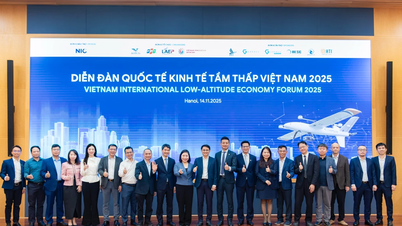



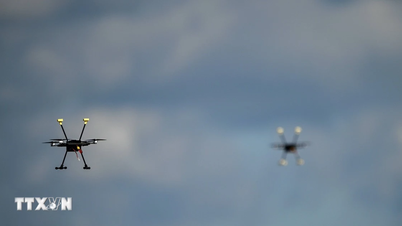




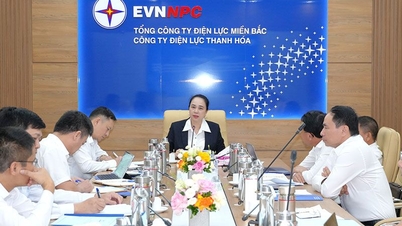
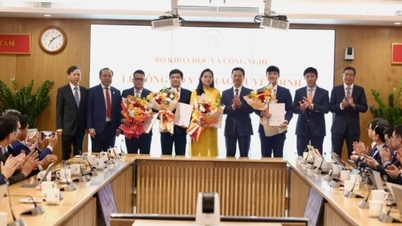











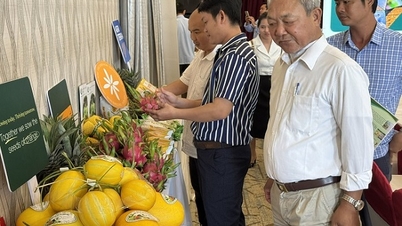
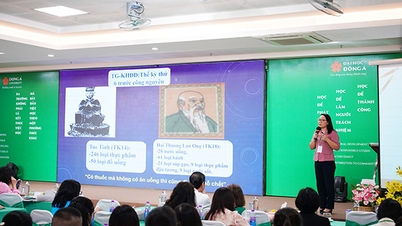






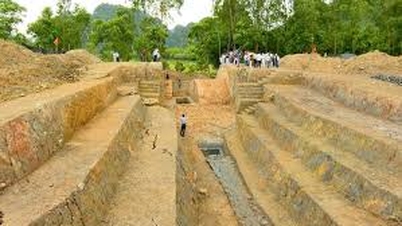

































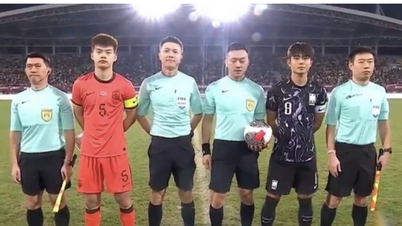




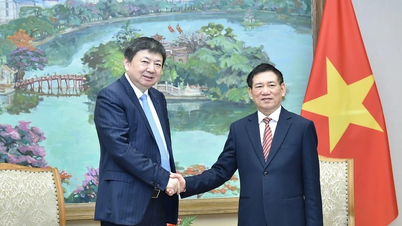


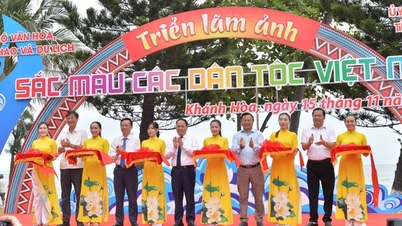


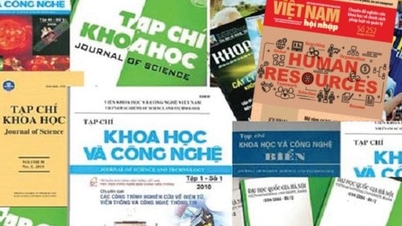






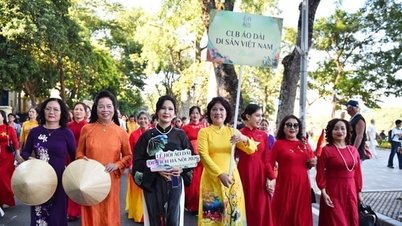













Comment (0)